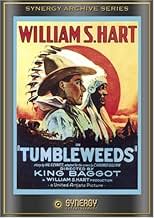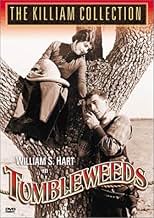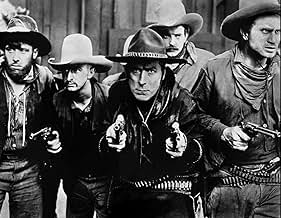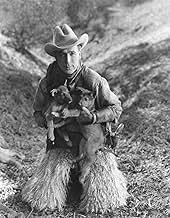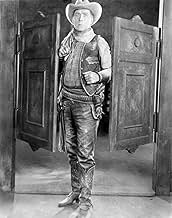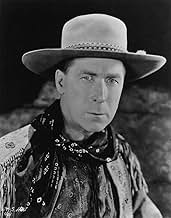The government will grant a fringe of terrain for the settlers who want to live and work there. The starting sign will be a gunshot which will iniciate the run for the best fields and claims... Read allThe government will grant a fringe of terrain for the settlers who want to live and work there. The starting sign will be a gunshot which will iniciate the run for the best fields and claims.The government will grant a fringe of terrain for the settlers who want to live and work there. The starting sign will be a gunshot which will iniciate the run for the best fields and claims.
- Directors
- Writers
- Stars
William S. Hart
- Don Carver
- (as Wm. S. Hart)
- …
Richard Neill
- Bill Freel
- (as Richard R. Niell)
George F. Marion
- Old Man
- (as George Marion)
Taylor N. Duncan
- Cavalry Major
- (as Ted Duncan)
Nora Cecil
- Pioneer Mother
- (uncredited)
Nino Cochise
- Indian
- (uncredited)
Monte Collins
- Hicks
- (uncredited)
Fred Gamble
- Hotel Proprietor
- (uncredited)
George Marion
- Homesteader
- (uncredited)
Apache Bill Russell
- Indian
- (uncredited)
- Directors
- Writers
- All cast & crew
- Production, box office & more at IMDbPro
Featured reviews
Once it was among the most popular movies of its kind, and now it's generally remembered only by silent movie fans, but "Tumbleweeds" is a classic silent Western that's still worth seeing. To be sure, a lot of its appeal now comes from nostalgia, but in its time it was close to the top of its genre.
The opening scenes start the story nicely, and they also give it some thoughtful overtones, with cowboys Hart and Lucien Littlefield coming to realize their role as "Tumbleweeds" in a changing world. The 'tumbleweed' image is used well in developing Hart's character, as he faces the consequences of the land rush and of the personal affairs he gets involved in. The story itself has a lot of familiar elements, without many surprises, but the atmosphere and the characters are enough to carry it.
The land rush sequence is probably the most exciting part of the movie, and it is quite a fine set piece. It's later followed by a fast-paced climactic chase that also works well. The action makes a good complement to the atmosphere of the changing frontier, making it a movie that fits together nicely, and that still works pretty well.
The opening scenes start the story nicely, and they also give it some thoughtful overtones, with cowboys Hart and Lucien Littlefield coming to realize their role as "Tumbleweeds" in a changing world. The 'tumbleweed' image is used well in developing Hart's character, as he faces the consequences of the land rush and of the personal affairs he gets involved in. The story itself has a lot of familiar elements, without many surprises, but the atmosphere and the characters are enough to carry it.
The land rush sequence is probably the most exciting part of the movie, and it is quite a fine set piece. It's later followed by a fast-paced climactic chase that also works well. The action makes a good complement to the atmosphere of the changing frontier, making it a movie that fits together nicely, and that still works pretty well.
Just from reading about him, I became a fan of William S. Hart before I ever saw one of his movies.
When I moved to Los Angeles, I made a pilgrimage to the late lamented Silent Movie Theatre on Fairfax, not only to see whatever silent films there might be available, but to plead for a chance to see any Hart film, and especially "Tumbleweeds," about which I had read so much.
Alas, the Hamptons, owners of the Theatre, never did show it, but I was able to rent a 16 mm print and show it myself, in my tiny living room.
It was all I had hoped. It was, and is, magnificent.
Character development was nigh onto perfect, and the intertitles by C. Gardner Sullivan, surely one of the greatest of such writers, merely enhanced the beauty of the presentation.
Oh, but there is more: Camera angles were brilliantly formatted. Only later did I learn that Mr. Hart himself was co-director.
William S. Hart (http://www.imdb.com/name/nm0366586/?ref_=fn_al_nm_1) was born a city slicker but, like me, I guess, he fell in love with the West and its mystique. He wanted to share that love with everyone, and for too few years presented the mythology.
You can find his spoken farewell at YouTube (https://www.youtube.com/watch?v=_BlgWP3Airs), and if you're really lucky you will find a copy of "Tumbleweeds" with that farewell used as a prologue. It still moves me to tears.
One reason I cry is that, listening to him, I think how great a talkie actor he could have been, with that voice; and I think what a loss to those of us who love Westerns generally and who love William S. Hart in particular.
"Tumbleweeds" is a classic, regardless of genre.
It is poetry on film, a magnificent motion picture.
When I moved to Los Angeles, I made a pilgrimage to the late lamented Silent Movie Theatre on Fairfax, not only to see whatever silent films there might be available, but to plead for a chance to see any Hart film, and especially "Tumbleweeds," about which I had read so much.
Alas, the Hamptons, owners of the Theatre, never did show it, but I was able to rent a 16 mm print and show it myself, in my tiny living room.
It was all I had hoped. It was, and is, magnificent.
Character development was nigh onto perfect, and the intertitles by C. Gardner Sullivan, surely one of the greatest of such writers, merely enhanced the beauty of the presentation.
Oh, but there is more: Camera angles were brilliantly formatted. Only later did I learn that Mr. Hart himself was co-director.
William S. Hart (http://www.imdb.com/name/nm0366586/?ref_=fn_al_nm_1) was born a city slicker but, like me, I guess, he fell in love with the West and its mystique. He wanted to share that love with everyone, and for too few years presented the mythology.
You can find his spoken farewell at YouTube (https://www.youtube.com/watch?v=_BlgWP3Airs), and if you're really lucky you will find a copy of "Tumbleweeds" with that farewell used as a prologue. It still moves me to tears.
One reason I cry is that, listening to him, I think how great a talkie actor he could have been, with that voice; and I think what a loss to those of us who love Westerns generally and who love William S. Hart in particular.
"Tumbleweeds" is a classic, regardless of genre.
It is poetry on film, a magnificent motion picture.
TUMBLEWEEDS (United Artists, 1925), Directed by King Baggott, stars the legendary William S. Hart (1865-1946) in what proved to become his final screen appearance. Virtually unknown by today's standards, Hart was a popular leading cowboy actor dating back to 1914, whose success would be categorized as a sort of Gary Cooper or John Wayne of his day. Hart was versatile in other roles, but westerns were his specialty, with many, including Hart himself, ranking TUMBLEWEEDS as his finest of all his westerns.
Opening title: "Man and beast – both blissfully unaware that their reign is over." Set in 1889, Dan Carver (William S. Hart), a range boss of the Box K Ranch, known as "just another tumbleweed," is introduced as a sympathetic cowboy who fails to shoot a rattlesnake only because it has as much right to be around as anyone else. He also takes in a couple of orphan wolf dog puppies to find them a home after their parent dogs have been poisoned. The plot develops as the United States Government allowing ranchers to graze cattle on their payment to the Cherokee Land Strip, 12,000 square miles of undeveloped prairie land between Kansas and Oklahoma. Riding to Caldwell, Kansas (population 200), on the edge of the Cherokee Strip, Dan spreads the news to its local residents. Journeying to his destination with "Kentucky Rose" (Lucien Littlefield), they encounter Mrs. Riley (Lillian Leighton), a widow woman with three children, who takes a liking to Kentucky Rose. After intervening with Noll Lassiter (J. Gordon Russell) for abusing a boy, Bart (Jack Murphy), and his dog, he forces the brutal man to apologize to both. Dan immediately bonds with Bart who now looks up to him as a father figure. However, after accidentally roping a young girl (Barbara Bedford) in a saloon, Dan soon learns that the girl, named Molly, happens to be sister of Bart and half-sister to the villainous Noll Lassiter. Because of his interest in Molly, Dan decides to settle down and stake out a homestead claim for himself, with the possibility of having Molly become his future wife. Noll, however, unwilling to overlook Dan's defeat over him, schemes with Benton, alias Bill Freel (Richard R. Neill), to have Dan put out of the way. They arrange in having Dave accused and arrested as a "sooner," which finds him being held prisoner inside a bull pen while the bad guys so as much as commit murder so they can legally stake the claim for themselves.
Most circulating prints of TUMBLEWEEDS consist of a 1939 reissue from Astor Pictures introducing eight minutes of spoken prologue by William S. Hart himself where he talks about his "greatest picture" from his Horseshoe Ranch in Newhall, California. After listening to Hart's speaking voice, it is much regret that this once popular actor of the silent screen never starred in at least one talkie western, even possibly a sound remake to his greatest movie, TUMBLEWEEDS. Chances are had be proceeded in his career in talkies, he most definitely would have succeeded, even if later reduced to matinée cowboy star as Tim McCoy or Ken Maynard for example. However, this 1939 prologue is the one and only chance for viewers to get to hear him speak, through his wonderful tribute to both himself and the movie itself.
Home video to TUMBLEWEEDS dating back to the 1980s either from Blackhawk or a decade later from Republic Pictures also contain the Hart prologue. Rather than the orchestral score with off-screen singing to title card songs, both video/DVD editions are piano scored by William H. Perry for the Killiam collection. Clocked at 77 minutes (not counting the prologue), it seems a shame that this and THE TOLL GATE (1920) to date have become the only two Hart westerns to have limited broadcasts on public television some decades ago. Considering that TUMBLEWEEDS is hailed as Hart's best movie makes one wonder if his other silent westerns are equally as good or even better? The films of William S. Hart deserve better recognition in movie history. At least TUMBLEWEEDS is still available (on DVD) to remain one of the finer westerns to come out from the silent movie era, along with being both an introduction and rediscovery to the great quiet-type cowboy hero named William S. Hart. (***)
Opening title: "Man and beast – both blissfully unaware that their reign is over." Set in 1889, Dan Carver (William S. Hart), a range boss of the Box K Ranch, known as "just another tumbleweed," is introduced as a sympathetic cowboy who fails to shoot a rattlesnake only because it has as much right to be around as anyone else. He also takes in a couple of orphan wolf dog puppies to find them a home after their parent dogs have been poisoned. The plot develops as the United States Government allowing ranchers to graze cattle on their payment to the Cherokee Land Strip, 12,000 square miles of undeveloped prairie land between Kansas and Oklahoma. Riding to Caldwell, Kansas (population 200), on the edge of the Cherokee Strip, Dan spreads the news to its local residents. Journeying to his destination with "Kentucky Rose" (Lucien Littlefield), they encounter Mrs. Riley (Lillian Leighton), a widow woman with three children, who takes a liking to Kentucky Rose. After intervening with Noll Lassiter (J. Gordon Russell) for abusing a boy, Bart (Jack Murphy), and his dog, he forces the brutal man to apologize to both. Dan immediately bonds with Bart who now looks up to him as a father figure. However, after accidentally roping a young girl (Barbara Bedford) in a saloon, Dan soon learns that the girl, named Molly, happens to be sister of Bart and half-sister to the villainous Noll Lassiter. Because of his interest in Molly, Dan decides to settle down and stake out a homestead claim for himself, with the possibility of having Molly become his future wife. Noll, however, unwilling to overlook Dan's defeat over him, schemes with Benton, alias Bill Freel (Richard R. Neill), to have Dan put out of the way. They arrange in having Dave accused and arrested as a "sooner," which finds him being held prisoner inside a bull pen while the bad guys so as much as commit murder so they can legally stake the claim for themselves.
Most circulating prints of TUMBLEWEEDS consist of a 1939 reissue from Astor Pictures introducing eight minutes of spoken prologue by William S. Hart himself where he talks about his "greatest picture" from his Horseshoe Ranch in Newhall, California. After listening to Hart's speaking voice, it is much regret that this once popular actor of the silent screen never starred in at least one talkie western, even possibly a sound remake to his greatest movie, TUMBLEWEEDS. Chances are had be proceeded in his career in talkies, he most definitely would have succeeded, even if later reduced to matinée cowboy star as Tim McCoy or Ken Maynard for example. However, this 1939 prologue is the one and only chance for viewers to get to hear him speak, through his wonderful tribute to both himself and the movie itself.
Home video to TUMBLEWEEDS dating back to the 1980s either from Blackhawk or a decade later from Republic Pictures also contain the Hart prologue. Rather than the orchestral score with off-screen singing to title card songs, both video/DVD editions are piano scored by William H. Perry for the Killiam collection. Clocked at 77 minutes (not counting the prologue), it seems a shame that this and THE TOLL GATE (1920) to date have become the only two Hart westerns to have limited broadcasts on public television some decades ago. Considering that TUMBLEWEEDS is hailed as Hart's best movie makes one wonder if his other silent westerns are equally as good or even better? The films of William S. Hart deserve better recognition in movie history. At least TUMBLEWEEDS is still available (on DVD) to remain one of the finer westerns to come out from the silent movie era, along with being both an introduction and rediscovery to the great quiet-type cowboy hero named William S. Hart. (***)
Seen in a 16mm print from the 1939 release (not necessarily the 1975 restoration listed by imdb), the sheer sincerity of the film-makers appealed highly. Intelligent art-gallery audience loved it - shown on 40th anni of Hart's death. Sound was coarse (expected) but loud and consistent in quality with image
"Tumbleweeds" is a classic of the silent era. It marked the final film in the career of western movie pioneer William S. Hart.
The plot revolves around the Cherokee Land Rush of 1889 Oklahoma where a large tract of land was thrown open to the public for the taking by the American government.
Don Carver (Hart) and his pal Kentucky Rose (Lucien Littlefield) had been earning their living as "tumbleweeds", another name for drifting cowpokes. When the last roundup is completed, they decide to take part in the land rush. Carver meets up with the charming Molly Lassiter (Barbara Bedford) after having had an altercation with her half brother Noll (J. Gordon Russell). Noll teams up with Bill Freel (Richard R. Neill) to acquire a choice ranch section by any means necessary. Turns out that Carver has his sights set on the same ranch which he wants to get for Molly.
The highlight of the film is of course, the land rush sequence. It is marvelously staged by Directors King Baggot and Hart himself. A cast of thousands was employed. A remarkable piece of film making for this or any other time.
The version of the film that is usually shown these days is the 1939 re-issue which had sound effects added, as well as a moving prologue filmed especially for this version. It features Hart coming out of retirement and describing the film and then talking about his career and in effect saying goodbye to all of his fans. He had left films after "Tumbleweeds" following a dispute with the film's distributor.
Hart had always insisted on realism in his films. This had worked in his early films but in the 20s, he had to compete with the more popular films of the flamboyant Tom Mix. He had reached his 60s by this time so he wisely decided to go out on top.
Ohh...the thrill of it all!
The plot revolves around the Cherokee Land Rush of 1889 Oklahoma where a large tract of land was thrown open to the public for the taking by the American government.
Don Carver (Hart) and his pal Kentucky Rose (Lucien Littlefield) had been earning their living as "tumbleweeds", another name for drifting cowpokes. When the last roundup is completed, they decide to take part in the land rush. Carver meets up with the charming Molly Lassiter (Barbara Bedford) after having had an altercation with her half brother Noll (J. Gordon Russell). Noll teams up with Bill Freel (Richard R. Neill) to acquire a choice ranch section by any means necessary. Turns out that Carver has his sights set on the same ranch which he wants to get for Molly.
The highlight of the film is of course, the land rush sequence. It is marvelously staged by Directors King Baggot and Hart himself. A cast of thousands was employed. A remarkable piece of film making for this or any other time.
The version of the film that is usually shown these days is the 1939 re-issue which had sound effects added, as well as a moving prologue filmed especially for this version. It features Hart coming out of retirement and describing the film and then talking about his career and in effect saying goodbye to all of his fans. He had left films after "Tumbleweeds" following a dispute with the film's distributor.
Hart had always insisted on realism in his films. This had worked in his early films but in the 20s, he had to compete with the more popular films of the flamboyant Tom Mix. He had reached his 60s by this time so he wisely decided to go out on top.
Ohh...the thrill of it all!
Did you know
- Trivia(at around 1h 7 mins) Just after the locked-up "Sooners" rush Dan Carver, who is cutting through a rail, the scene shifts to a team of horses pulling a wagon. The right "off" wheeler horse can be seen to go lame but continue running with a noticeable limp.
- Quotes
Don Carver: Boys - it's the last of the West.
- Alternate versionsThe 1939-reissued version was preceded by an eight-minute sound prologue with William S. Hart introducing the film.
- ConnectionsFeatured in The Great Chase (1962)
Details
Box office
- Budget
- $312,000 (estimated)
- Runtime
- 1h 18m(78 min)
- Sound mix
- Aspect ratio
- 1.33 : 1
Contribute to this page
Suggest an edit or add missing content

